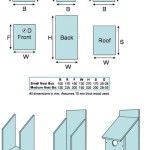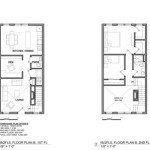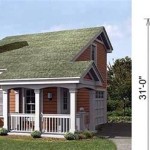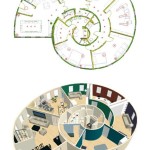Drawing a House Floor Plan: A Comprehensive Guide
A house floor plan serves as a fundamental blueprint for construction, renovation, and interior design. It is a scaled diagram that illustrates the relationships between rooms, spaces, and physical features on a single level of a building. Understanding how to draw a house floor plan, whether manually or digitally, is crucial for homeowners, architects, builders, and interior designers alike. This article provides a comprehensive guide to creating accurate and informative house floor plans.
Understanding the Purpose and Benefits of a Floor Plan
Before embarking on the drawing process, it is essential to understand the purpose of a floor plan and the benefits it offers. A well-executed floor plan allows for effective communication between all parties involved in a construction or renovation project. It provides a visual representation of the proposed design, enabling stakeholders to understand the layout, dimensions, and spatial relationships of the building. This clarity helps to minimize misunderstandings, reduce errors, and ensure that the final product aligns with the client's vision.
Furthermore, a floor plan serves as a valuable tool for space planning and furniture arrangement. By accurately depicting the dimensions of each room, a floor plan allows users to experiment with different layouts and determine the optimal placement of furniture and fixtures. This process helps to maximize functionality, improve traffic flow, and create a comfortable and aesthetically pleasing living environment.
Cost estimation is another significant benefit of having a detailed floor plan. By accurately representing the size and scope of the project, a floor plan enables contractors to provide more precise estimates for materials, labor, and other expenses. This transparency helps to avoid unexpected cost overruns and ensures that the project stays within budget.
Essential Steps in Drawing a House Floor Plan
The process of drawing a house floor plan involves several essential steps, regardless of whether it is done manually or using computer-aided design (CAD) software. These steps ensure accuracy, clarity, and completeness in the final product.
The first step is
measuring the existing space
. This involves taking precise measurements of all walls, doors, windows, and other fixed features in the building. It is crucial to use a reliable measuring tool, such as a laser distance measurer or a measuring tape, to ensure accuracy. The measurements should be recorded carefully, noting the thickness of walls, the dimensions of doors and windows, and the distances between features. For existing structures, creating a rough sketch of the space before measuring can be useful to organize the data collection process.Next,
choosing a scale
is necessary. The scale determines the relationship between the dimensions on the drawing and the actual dimensions of the building. A common scale for residential floor plans is 1/4 inch equals 1 foot (1:48), meaning that every 1/4 inch on the drawing represents 1 foot in the real world. Selecting an appropriate scale depends on the size of the building and the desired level of detail. Smaller scales are suitable for larger buildings, while larger scales allow for more intricate details to be represented.After selecting a scale, the process of
drawing the exterior walls
can begin. Using the measurements taken earlier, draw the exterior walls of the building to scale. Ensure that the walls are drawn accurately, paying attention to corners, angles, and any irregularities in the shape of the building. For manual drawings, use a ruler and protractor to maintain accuracy. For digital drawings, use the CAD software's drawing tools to create precise lines and shapes.The next step is
drawing the interior walls and features
. Using the measurements of the interior spaces, draw the interior walls, doors, windows, and other fixed features, such as fireplaces and built-in cabinets. Represent doors with an arc indicating the direction of swing, and windows with appropriate symbols. Pay close attention to the placement of these features, ensuring that they are drawn accurately according to the measurements taken.Following the drawing of walls and features,
adding dimensions and labels
is crucial. Dimensions should be added to all walls, rooms, and features, indicating their length, width, and height. These dimensions provide essential information for construction and renovation purposes. Labels should be added to each room, identifying its function (e.g., living room, bedroom, kitchen). Other labels may be added to identify specific features, such as doors, windows, and appliances.Finally,
reviewing and revising the floor plan
is a critical step. After completing the drawing, carefully review the floor plan to ensure that it is accurate, complete, and easy to understand. Check for any errors or omissions, and make any necessary revisions. It can be helpful to have another person review the floor plan to identify any potential problems or areas for improvement. The floor plan should be updated as needed to reflect any changes to the design.Tools and Techniques for Creating Floor Plans
Several tools and techniques can be used to create house floor plans, each with its own advantages and disadvantages. The choice of tools and techniques depends on the user's skill level, budget, and the complexity of the project.
Manual drafting
involves using traditional drawing tools, such as pencils, rulers, protractors, and drafting compasses, to create floor plans on paper. This method requires a high level of skill and precision, but it can be a cost-effective option for simple projects. Manual drafting allows for a high degree of control over the drawing process, but it can be time-consuming and prone to errors. Changes and revisions can be more difficult to implement with manual drafting compared to digital methods.Computer-aided design (CAD) software
offers a more efficient and accurate way to create floor plans. CAD software, such as AutoCAD, Revit, and SketchUp, provides a wide range of tools for drawing, editing, and dimensioning floor plans. CAD software allows for precise measurements, easy revisions, and the ability to create 3D models of the building. However, CAD software can be expensive, and it requires a significant investment in training and learning. The learning curve can be steep for beginners, but the benefits of increased efficiency and accuracy often outweigh the initial challenges.Online floor plan software
provides a more user-friendly alternative to CAD software. These online tools, such as Floorplanner, RoomSketcher, and SmartDraw, offer a simpler interface and a more intuitive workflow. Online floor plan software is often cloud-based, allowing users to access their drawings from anywhere with an internet connection. These tools typically offer a library of pre-drawn symbols and templates, making it easier to create floor plans quickly. Online floor plan software is often subscription-based, with varying levels of features and pricing.Regardless of the tools used, certain techniques can improve the accuracy and clarity of floor plans. Using consistent line weights to differentiate between walls, doors, and windows can enhance readability. Employing standard architectural symbols for doors, windows, appliances, and other features ensures that the floor plan is easily understood by all stakeholders. Accurately representing the thickness of walls is crucial for determining the available space in each room. Clearly labeling rooms and features helps to avoid confusion and ensures that the floor plan is informative. Utilizing a grid system can aid in maintaining accurate proportions and alignments. Finally, regularly saving the drawing during the creation process prevents data loss and ensures that progress is not lost due to technical issues.

Floor Plan Creator And Designer Free Easy App

House Plans How To Design Your Home Plan

House Plans How To Design Your Home Plan

House Plans How To Design Your Home Plan

Easy Home Building Floor Plan Cad Pro

Home Floor Plans House Plan Drawings

Draw Floor Plans In Half The Time Cedreo

Floor Plan Creator And Designer Free Easy App

How To Draw A Floor Plan The Simple 7 Step Guide For 2024

Floor Plans Types Symbols Examples
Related Posts








